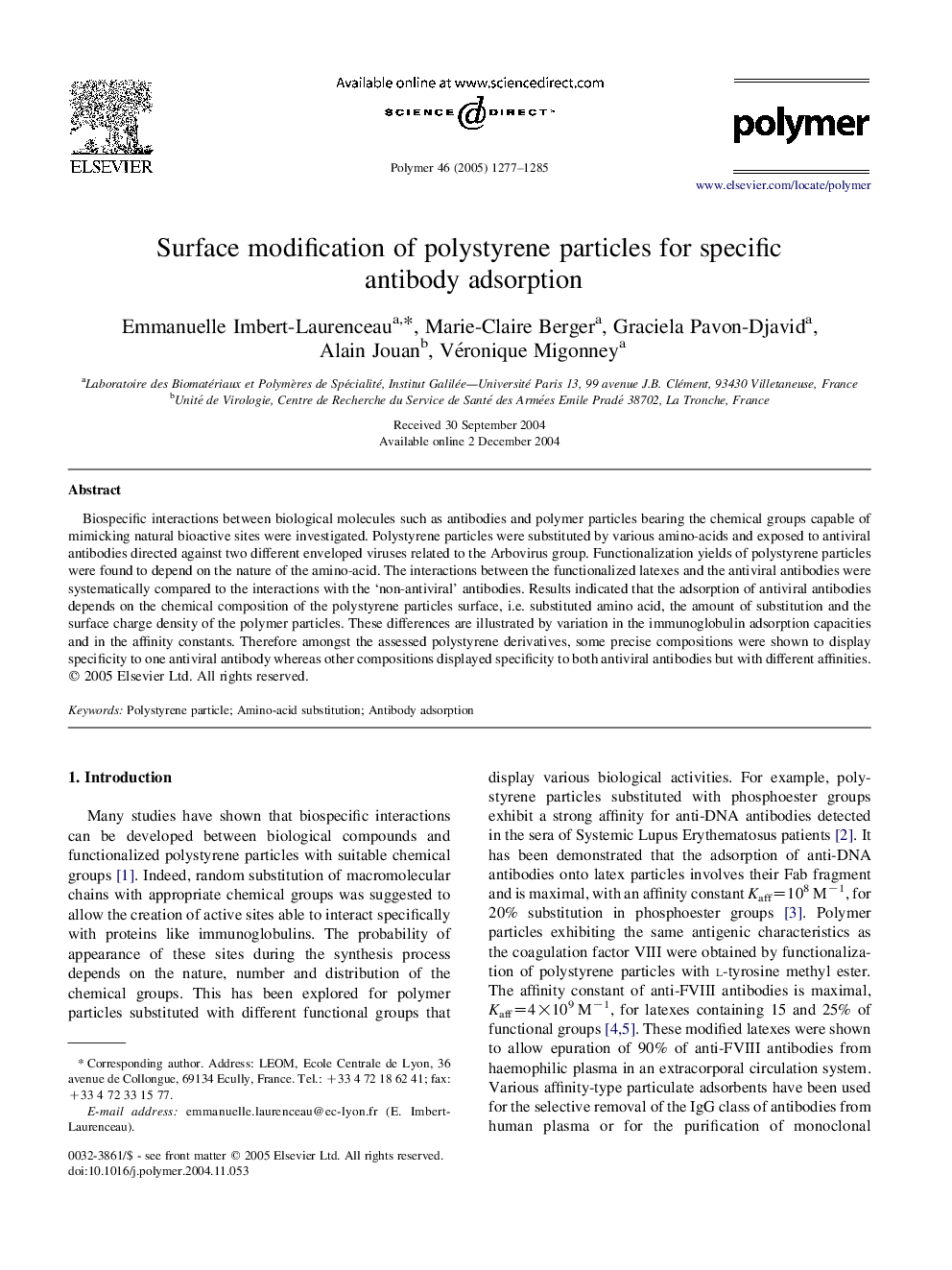| Article ID | Journal | Published Year | Pages | File Type |
|---|---|---|---|---|
| 9559286 | Polymer | 2005 | 9 Pages |
Abstract
Biospecific interactions between biological molecules such as antibodies and polymer particles bearing the chemical groups capable of mimicking natural bioactive sites were investigated. Polystyrene particles were substituted by various amino-acids and exposed to antiviral antibodies directed against two different enveloped viruses related to the Arbovirus group. Functionalization yields of polystyrene particles were found to depend on the nature of the amino-acid. The interactions between the functionalized latexes and the antiviral antibodies were systematically compared to the interactions with the 'non-antiviral' antibodies. Results indicated that the adsorption of antiviral antibodies depends on the chemical composition of the polystyrene particles surface, i.e. substituted amino acid, the amount of substitution and the surface charge density of the polymer particles. These differences are illustrated by variation in the immunoglobulin adsorption capacities and in the affinity constants. Therefore amongst the assessed polystyrene derivatives, some precise compositions were shown to display specificity to one antiviral antibody whereas other compositions displayed specificity to both antiviral antibodies but with different affinities.
Related Topics
Physical Sciences and Engineering
Chemistry
Organic Chemistry
Authors
Emmanuelle Imbert-Laurenceau, Marie-Claire Berger, Graciela Pavon-Djavid, Alain Jouan, Véronique Migonney,
